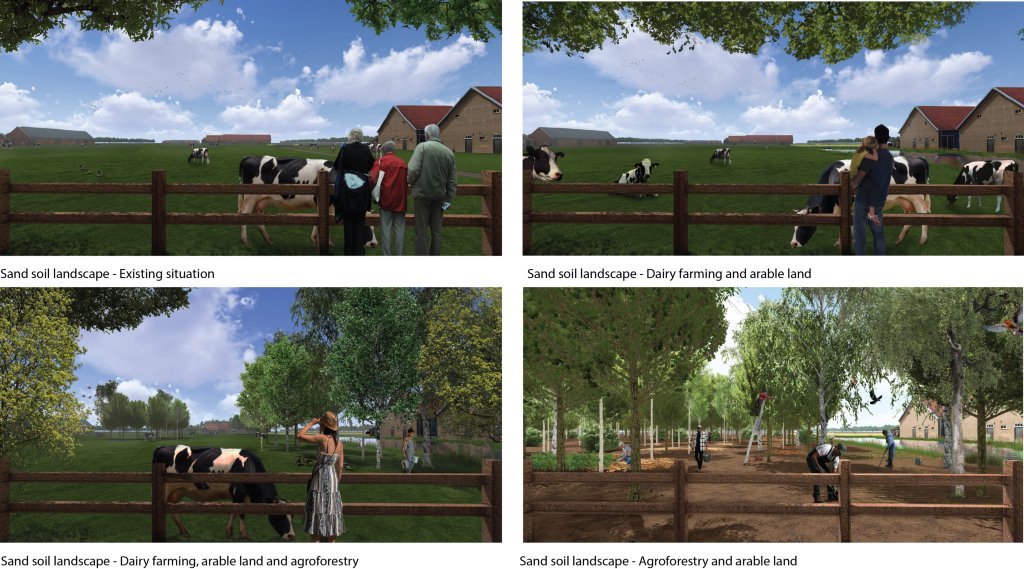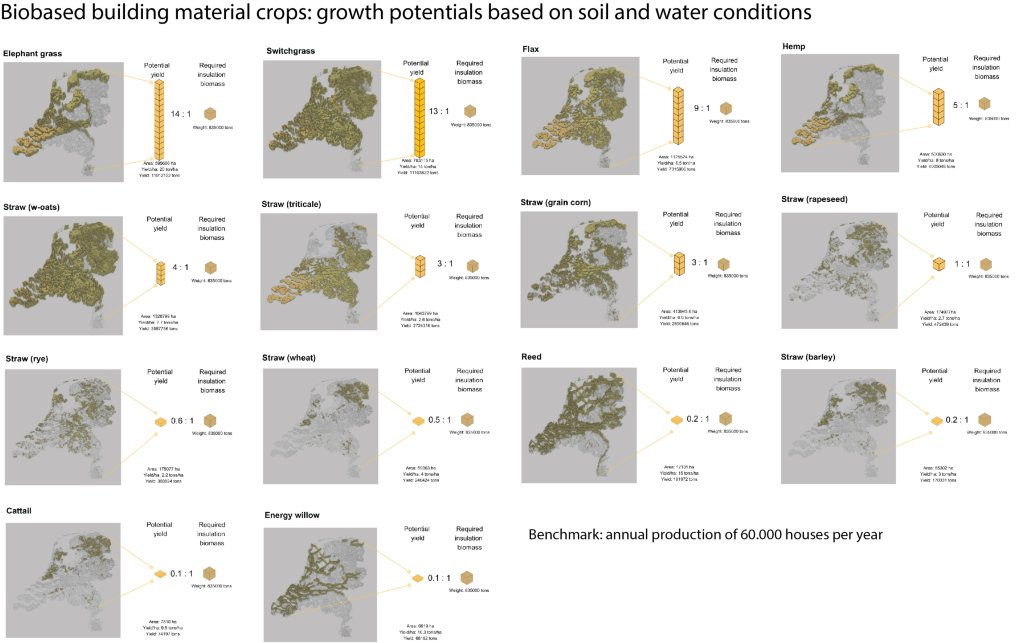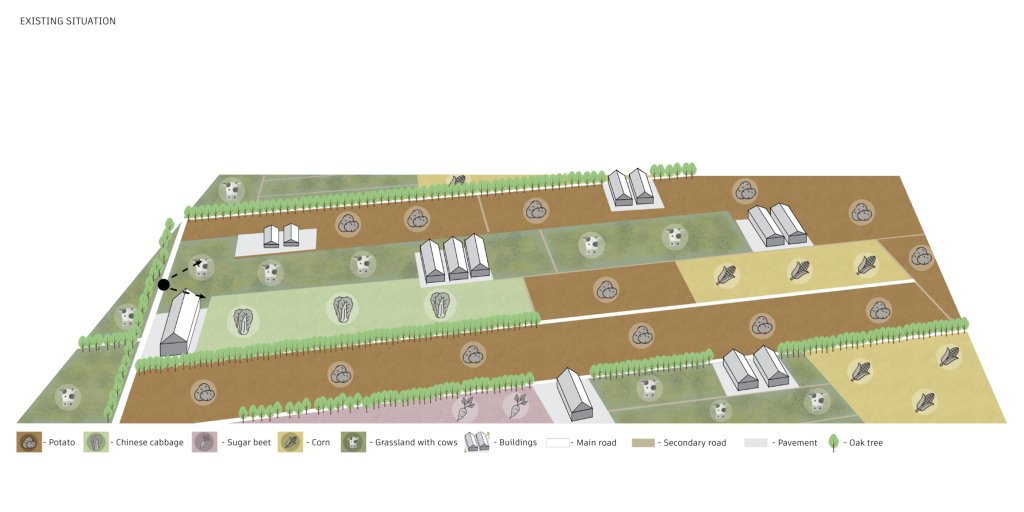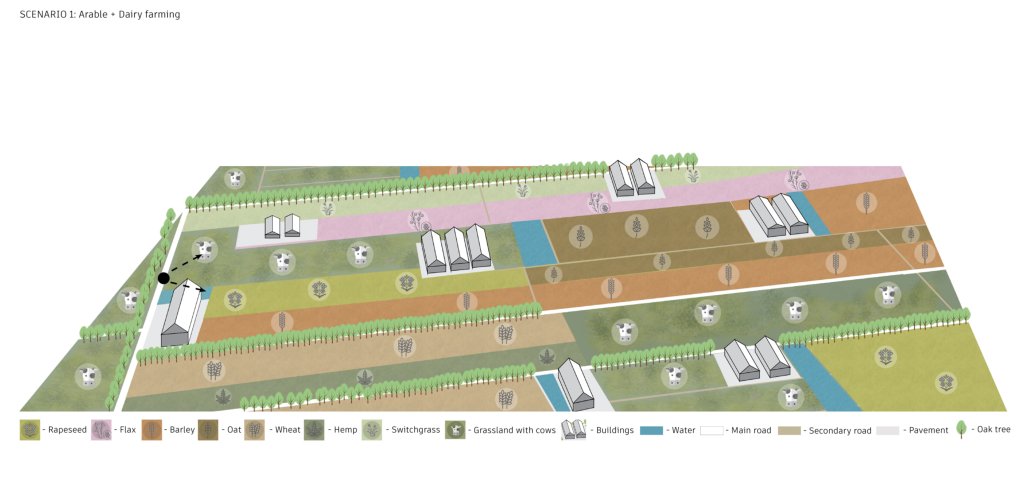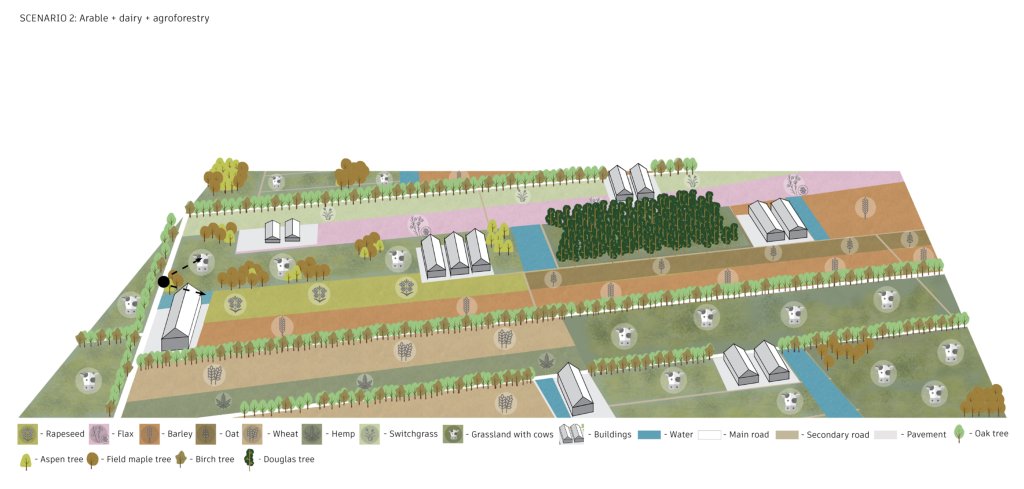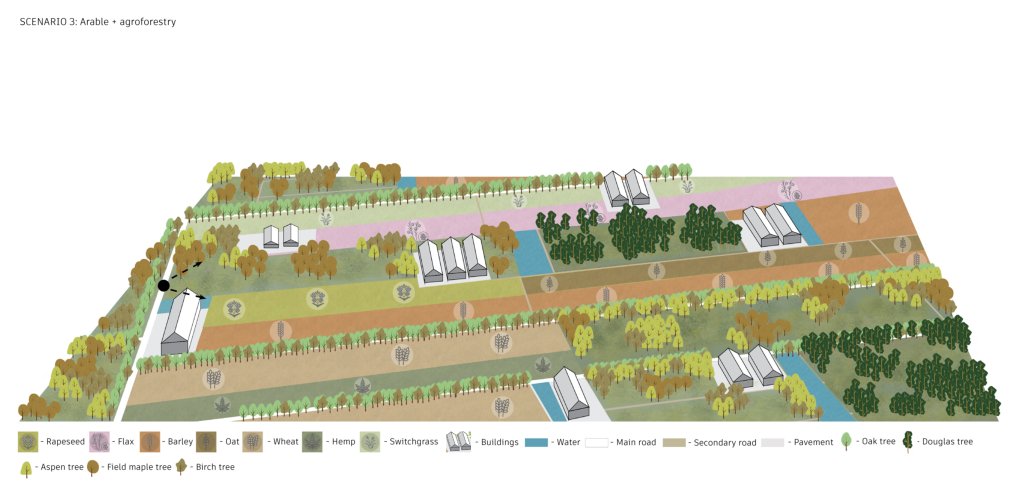Sanda Lenzholzer, Yehan Wu, Martha Bakker, Emiel Wubben, Arjen van Kampen, Amy Wortel, Arwen van der Gugten, Coen van Ruiten, Marieke Meeusen
Building houses from biobased materials is increasingly popular, and the Dutch government would like to see ten new houses built from biobased materials. These materials can be found in structural parts of houses, e.g. wooden beams, panels of chipboard or cross-laminated timber, smaller particles in insulation, and reed for thatching roofs. They can also be residuals from agricultural production such as straw, they can be dried plants such as, amongst others, flax, and trees.
Would you want to live in a house made of biobased materials?
First, we studied the potential production magnitudes of biobased building materials in Dutch landscapes, for different plants. We defined how these can be prioritised from other uses like the production of food, feed, fibre and pharmaceuticals. This led to prioritising multipurpose crops (e.g. straw) and rest crops like flax for soil recovery in areas with fertile soils. In less fertile areas where the production of food or feed offers less yield, growing more trees can provide the necessary wood.
To guide our subsequent design process we defined sustainability aims like protecting environments and enhancing biodiversity by lowering the use of fertilisers, pesticides, herbicides, and fungicides, and by saving water.
Based on these learnings and aims we designed scenarios for different farm and (agro-)forestry types in three main Dutch landscape and soil typologies: sand, clay and peat landscape. This resulted in eight scenarios of new farm types and landscapes.
Biobased building material plants can be grown in many ways and can be an interesting alternative for farmers.
In different landscape types, the switch to more building material production has a spatial impact.
In clay landscapes, food crops will partly be replaced with crops for building materials. The current landscapes will remain open in most scenarios.
The sand landscapes with their poor soils are better suited to growing trees. Therefore these landscapes will change from compartmented open landscapes to landscapes with forest patches.
The peat landscapes will change through soil subsidence and become increasingly inundated. Dairy farm systems will gradually change to reed and wood production. The current open landscapes will therefore change significantly.
